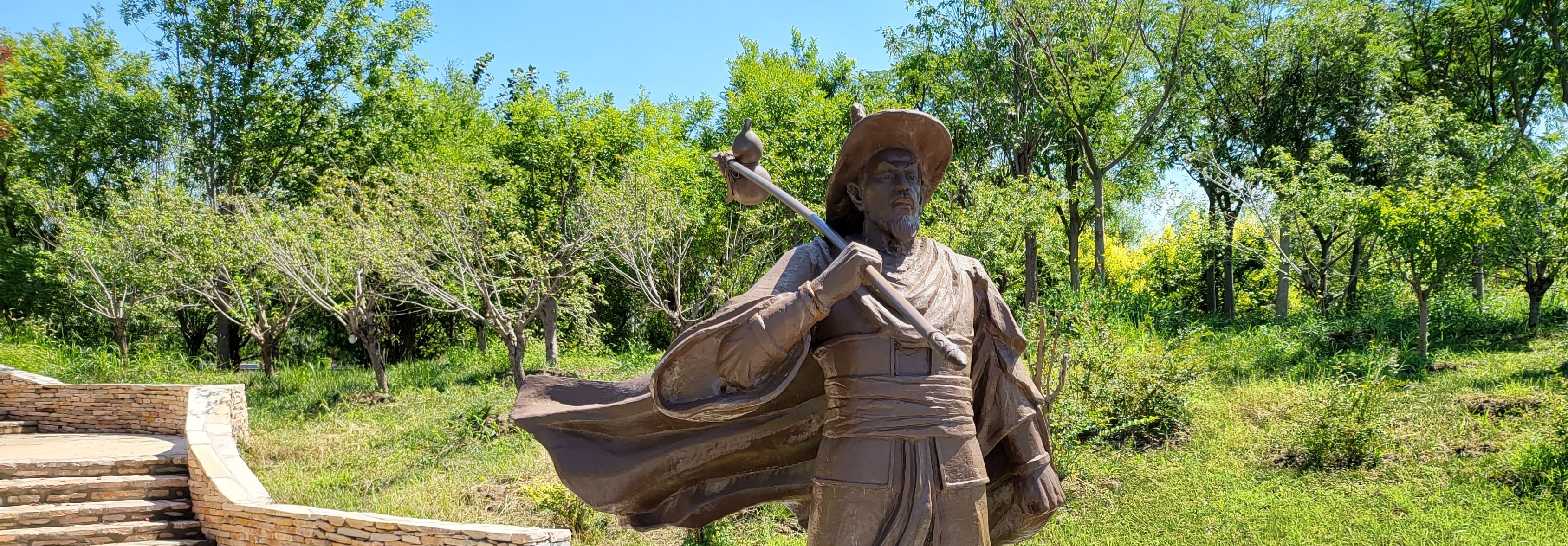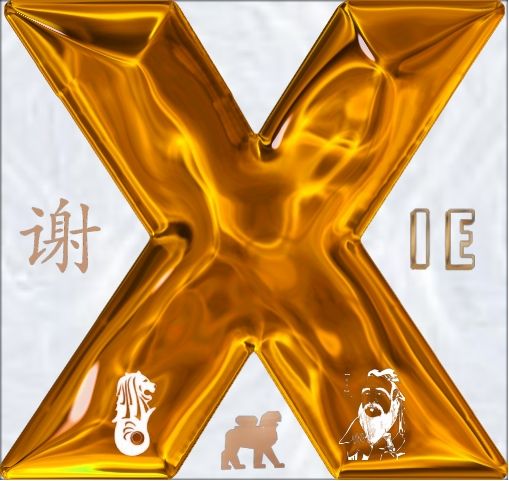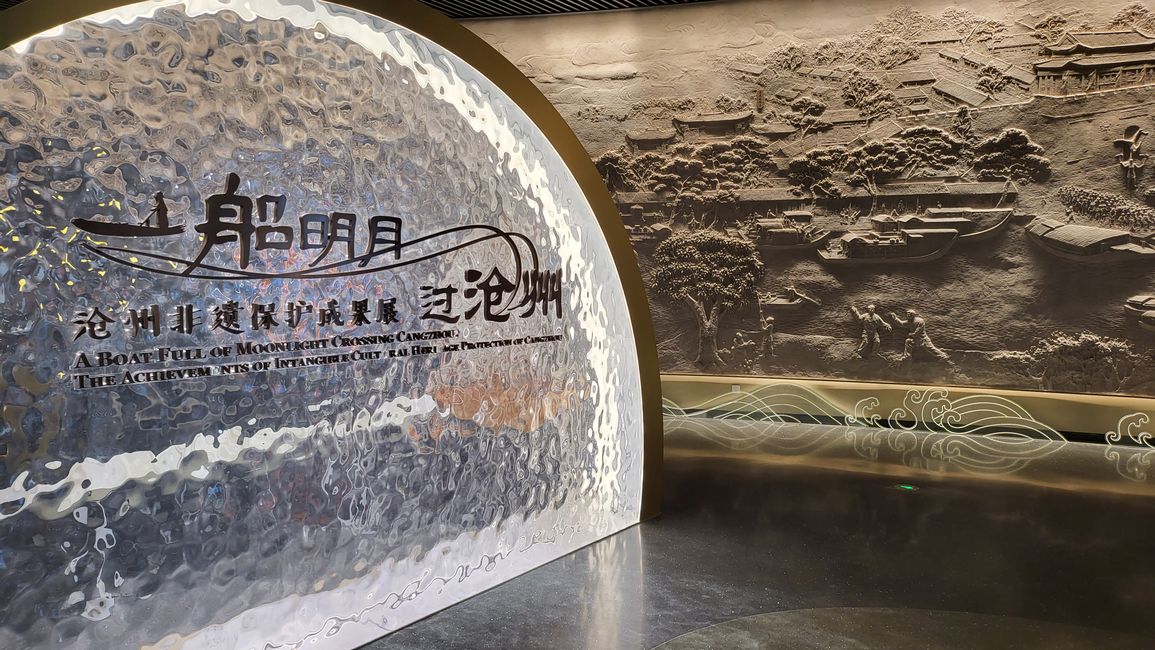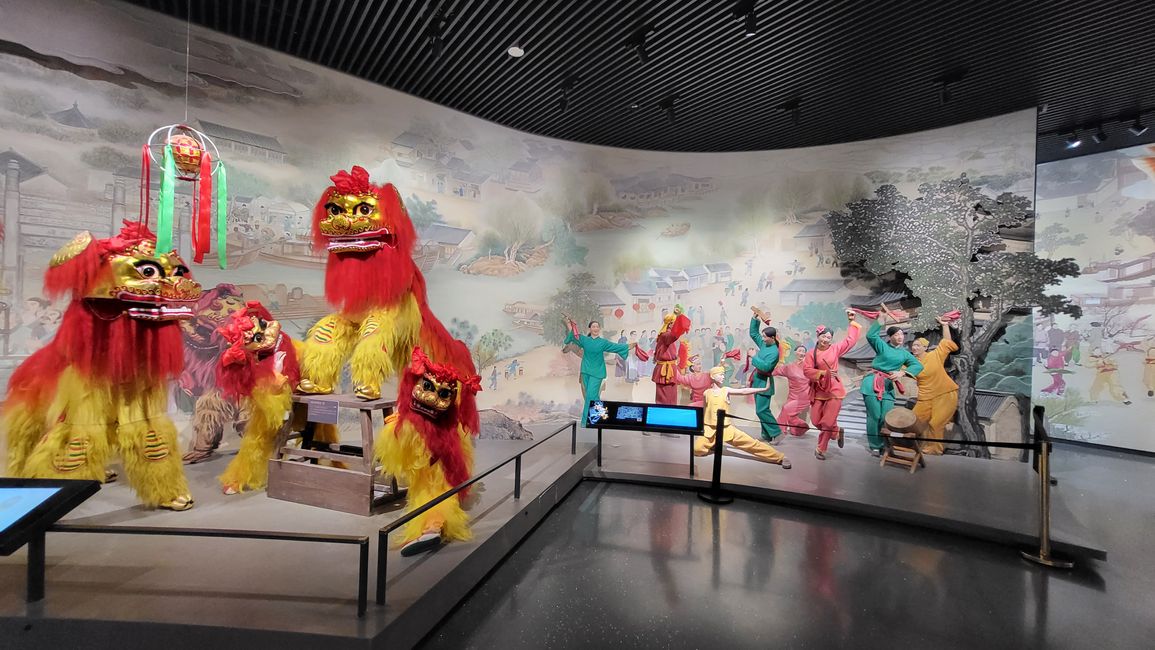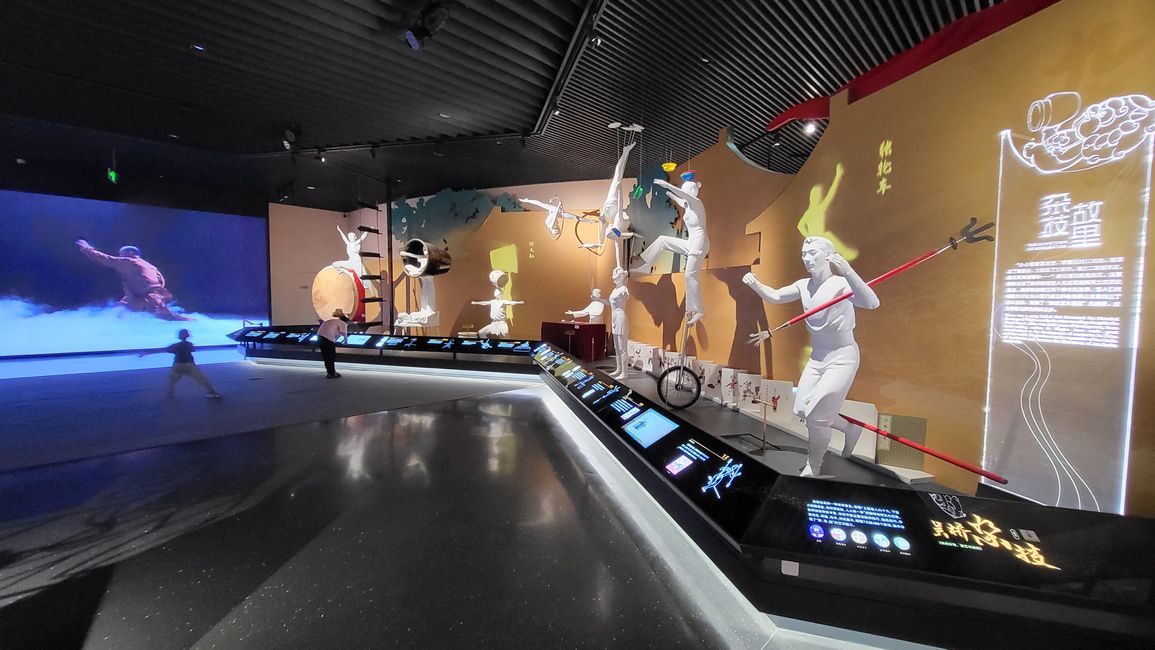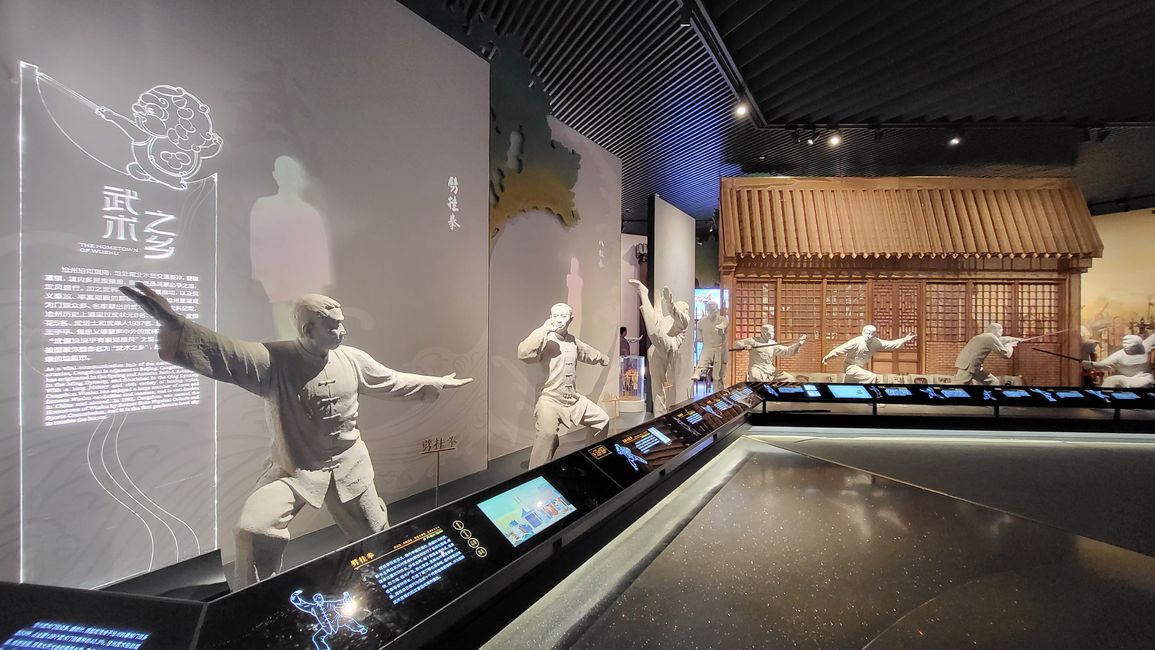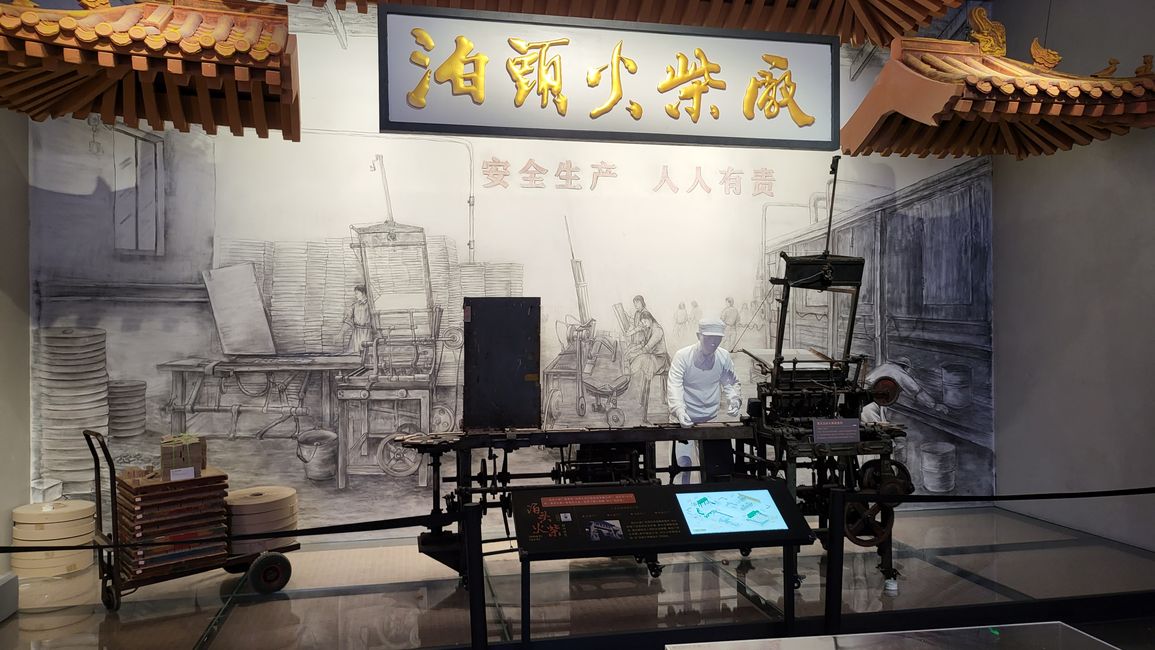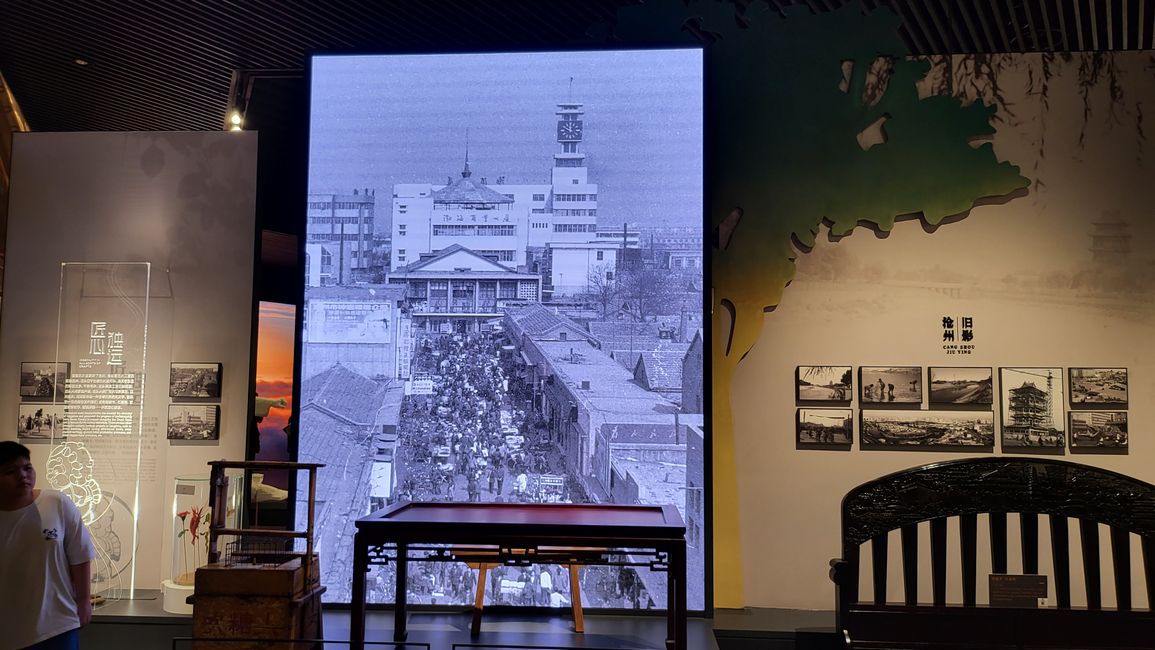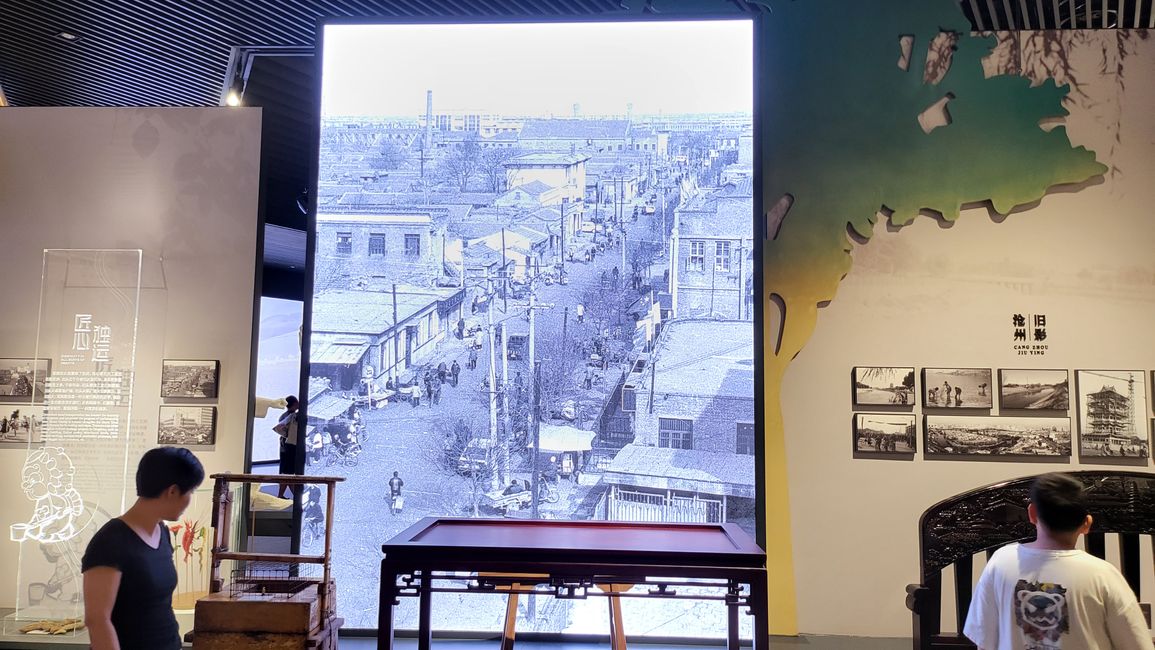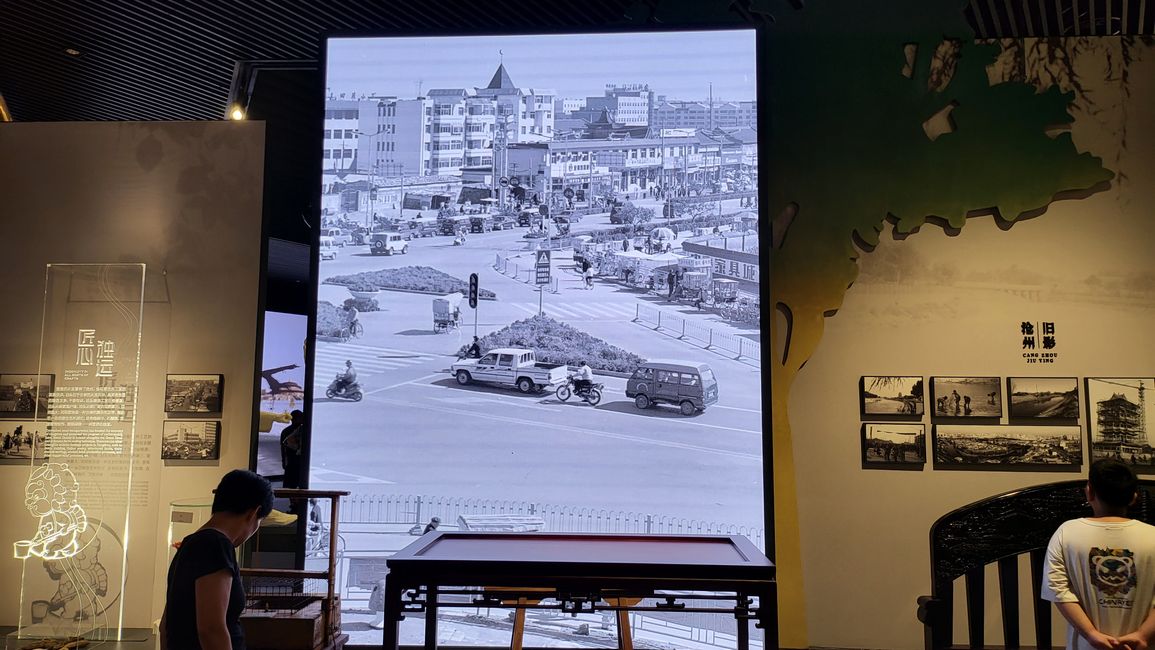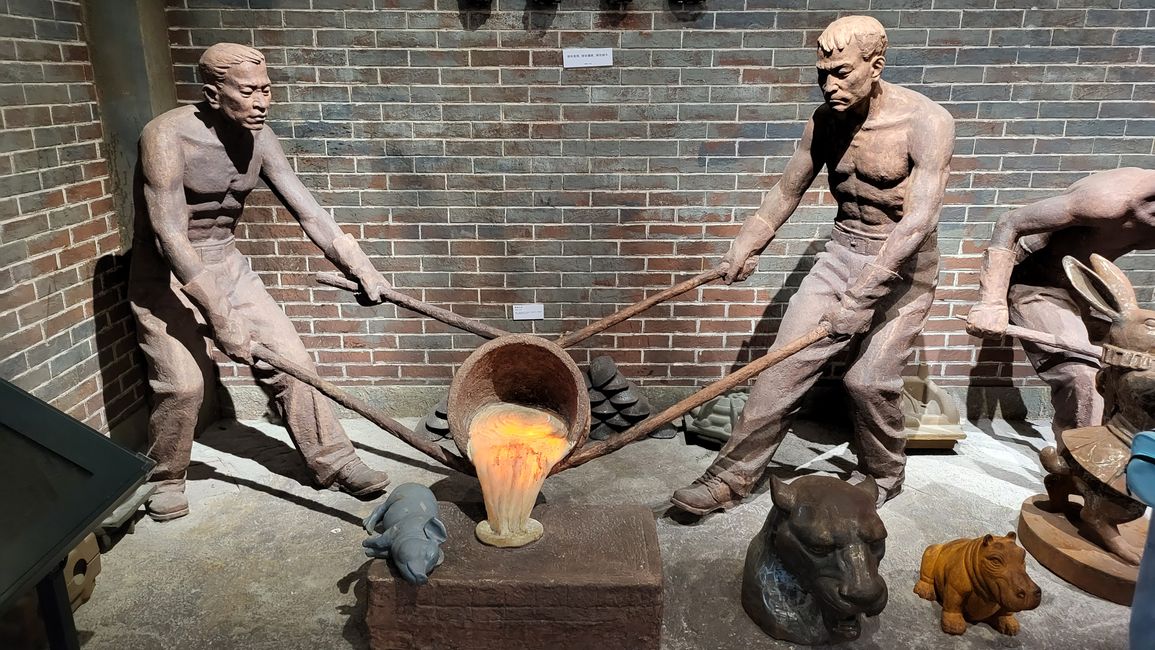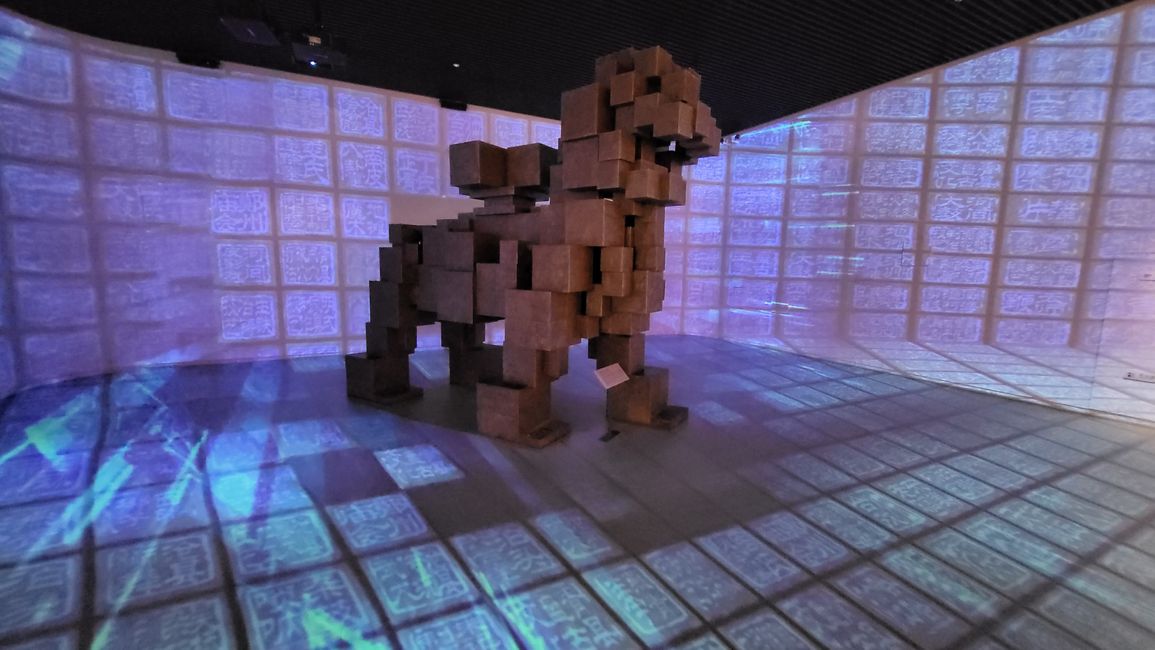Regional Culture in Cangzhou
Ishicilelwe: 14.08.2024
Part of the grand Grand Canal culture exhibition is the illumination of regional culture in Cangzhou. At the entrance, a line from a poem from the Qing Dynasty is quoted: 'It was almost midnight when a boat sailed on the canal, gliding in the moonlight towards Cangzhou.'
The mention of Cangzhou in the poem highlights the city as an important economic and cultural location along the Grand Canal. The exhibition begins with the widely celebrated culture of colorful lion dance and music found throughout China. But just around the corner, the most culturally significant theme is showcased in a grand presentation: acrobatics and the martial art Wushu. Cangzhou is both the birthplace and the center of these two cultural elements.
The martial art Wushu developed due to the thriving business of security agencies that protected and accompanied trading boats from raids (see blog post 'Caobang Security Agency of the Xie Family'). Cangzhou was a hub for this industry. The acrobatic performances were popularized by Wuqiao along the canal throughout China. The southeastern part of the Cangzhou region, in Wuqiao, is regarded as the cradle of Chinese acrobatics, where today, alongside a large theme park, the Hebei Wuqiao Acrobatic Art School and Wuqiao Acrobatic World train a multitude of acrobats.
The depiction of industrial development begins with a machine for producing matches. Those familiar with the Chinese love for firecrackers and cigarettes can fully appreciate the significance of this industry. Naturally, the representation of the iron industry in the homeland of the 'Iron Lion' cannot be missed, as the cast iron lion is not only a symbol of Cangzhou but also represents the outstanding iron craftsmanship of the region. In this exhibition area, old photos of Cangzhou are projected onto a wall, which always resonates with me, showing more people instead of cars on the streets. The finale features an artistic representation of the Iron Lion amidst an immense video projection.
Phendula
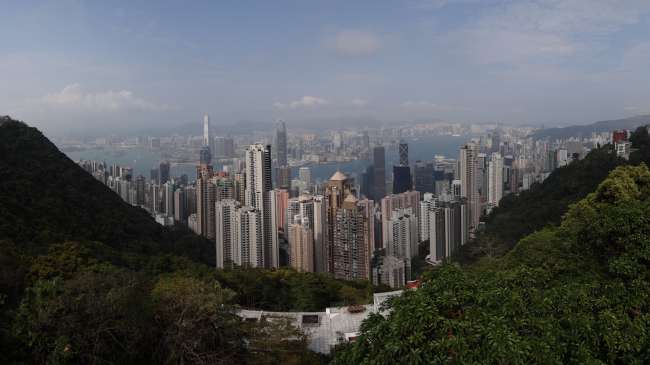
Imibiko yokuvakasha China
